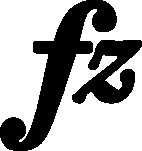



Verbal indications
- « Previous
- 1
- 2
- Next »
|
b. 179
|
composition: (Op. 4), Sonata in C minor, Mvt I
..
The presence of two mutually exclusive dynamic indications in A can be explained by an unfinished correction – Chopin first wrote one indication and then the other one, probably planning to erase the first one together with the other marks that were supposed to be removed (e.g. the staccato dots in bar 102 or category imprint: Differences between sources; Editorial revisions; Corrections & alterations; Source & stylistic information issues: Corrections in A , Errors resulting from corrections , GE revisions , Errors of A |
||||||||
|
b. 195
|
composition: (Op. 4), Sonata in C minor, Mvt I
..
In the main text we suggest adding the espressivo indication after the analogous one in the exposition (bar 17). category imprint: Editorial revisions |
||||||||
|
b. 231-239
|
composition: (Op. 4), Sonata in C minor, Mvt I
..
The con forza indication is written in A between the bottom stave in bars 231-232 and the top stave in bar 239. Under this indication, and over the R.H. part in bar 239, one can see traces of removal of a mark, probably a verbal indication or, e.g. category imprint: Graphic ambiguousness; Differences between sources; Source & stylistic information issues: Corrections in A , Inaccuracies in A |
- « Previous
- 1
- 2
- Next »

 &
&  in
in 

 . This suggests that Chopin changed his mind and replaced the deleted mark by con forza (added over it). This is how it was interpreted by
. This suggests that Chopin changed his mind and replaced the deleted mark by con forza (added over it). This is how it was interpreted by